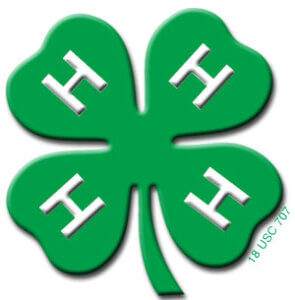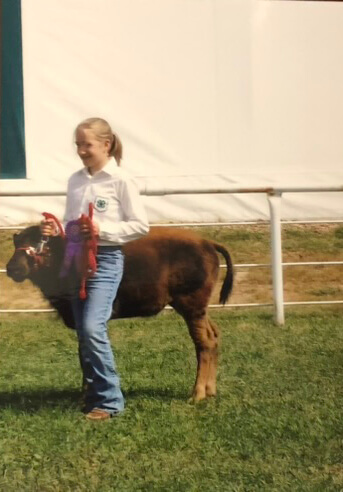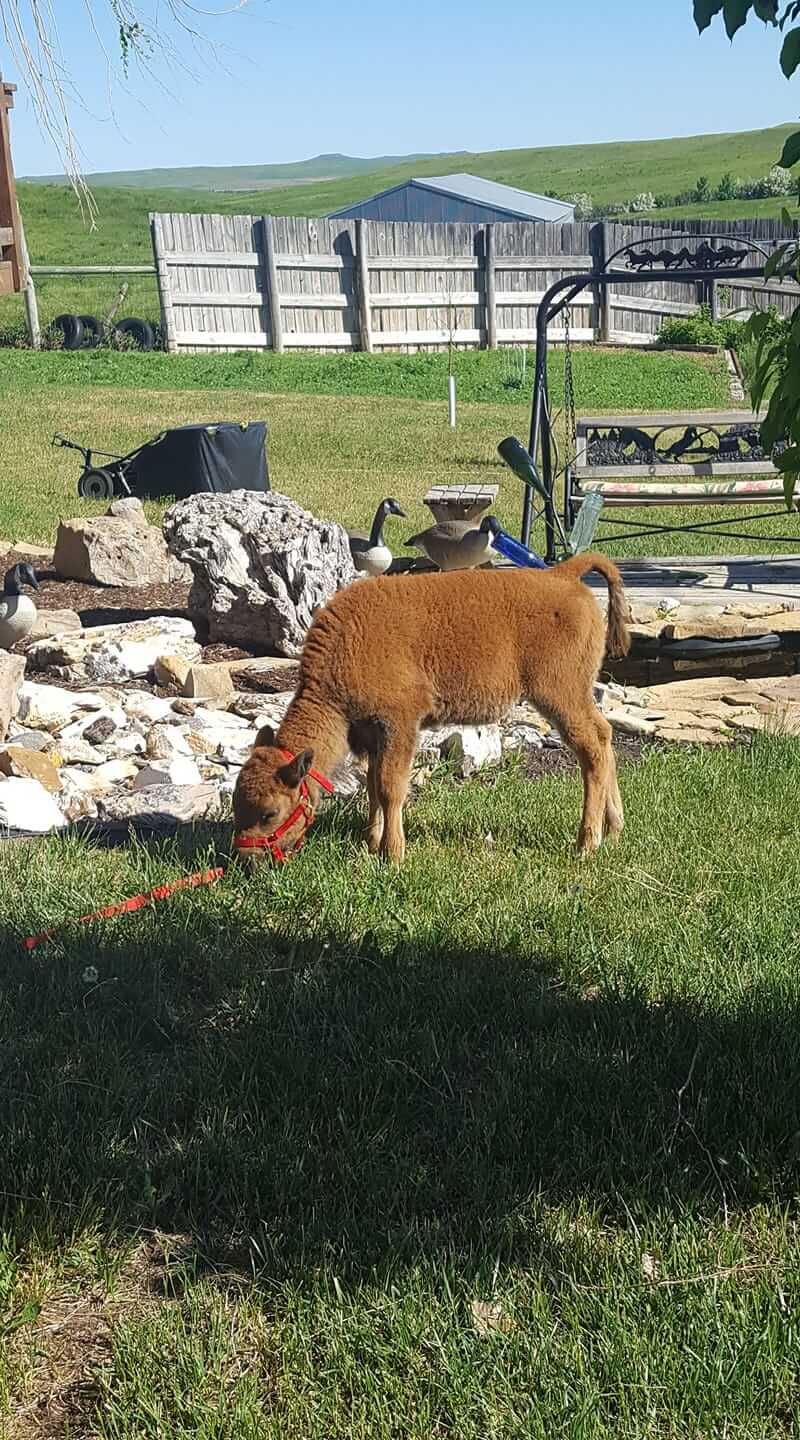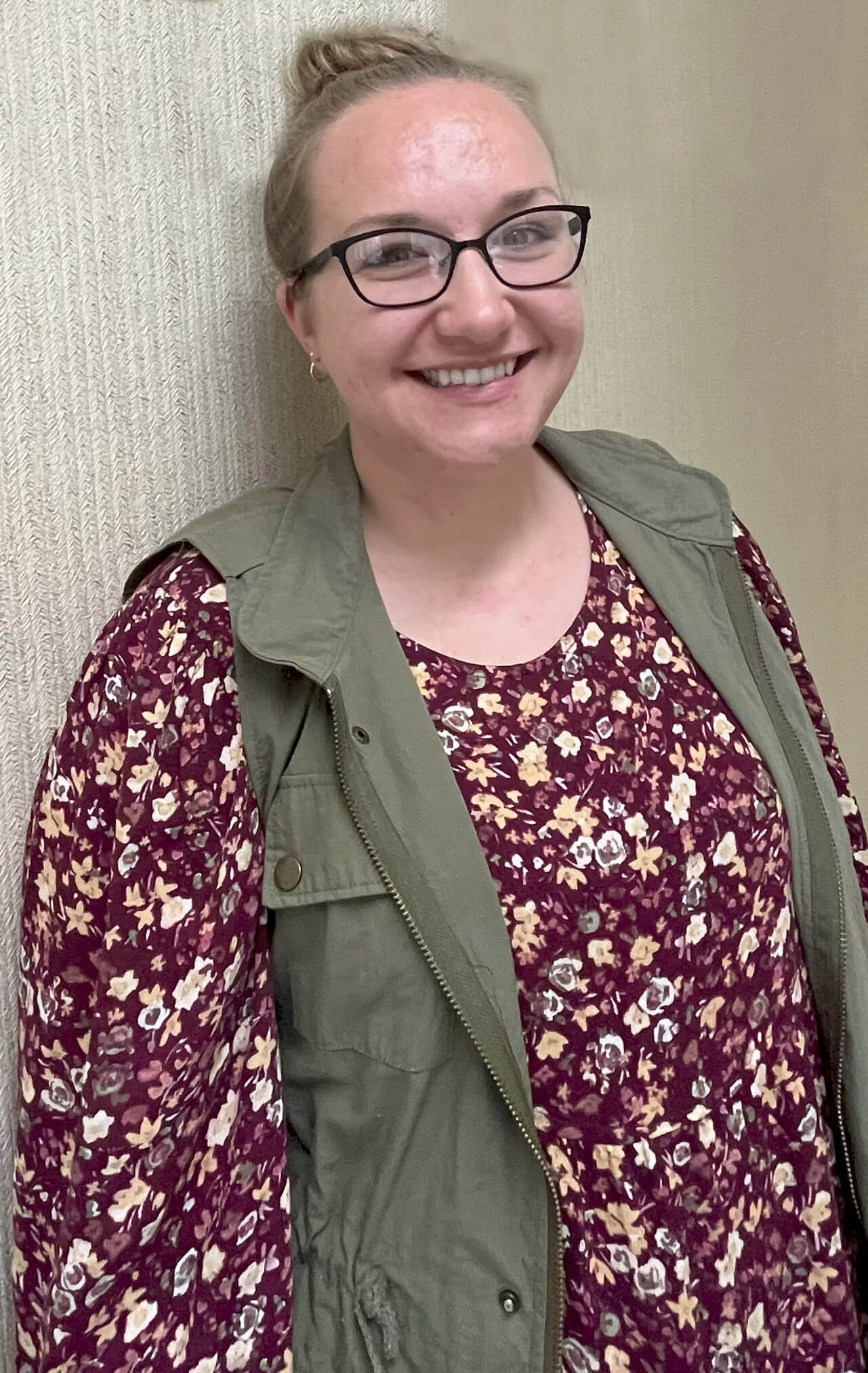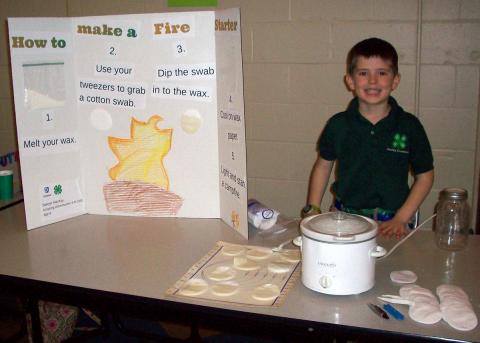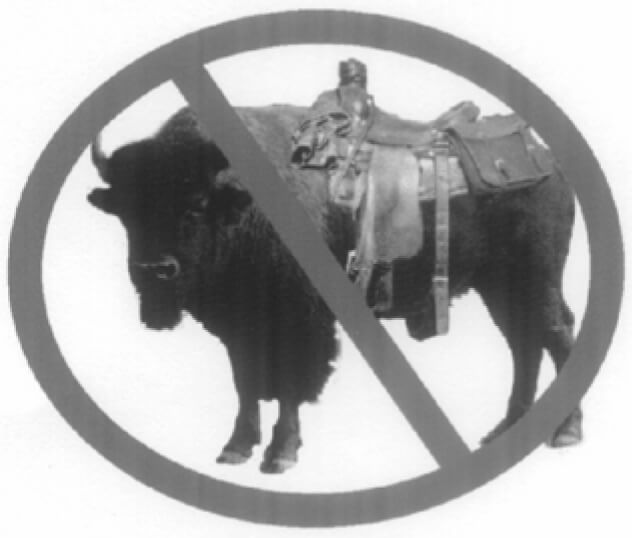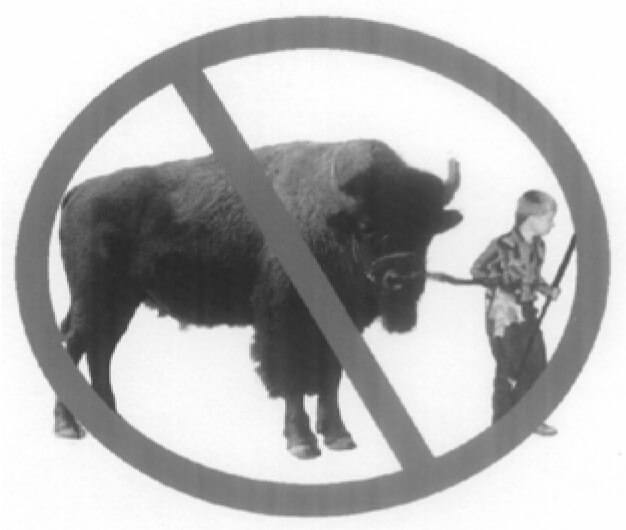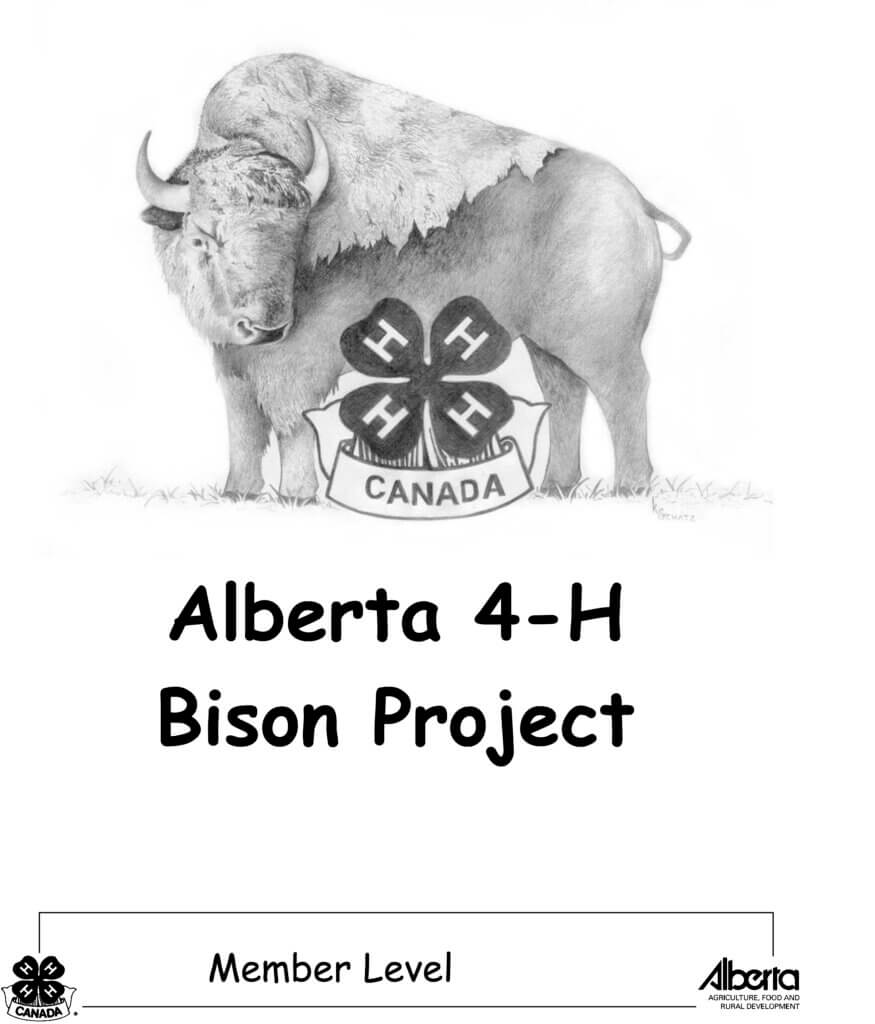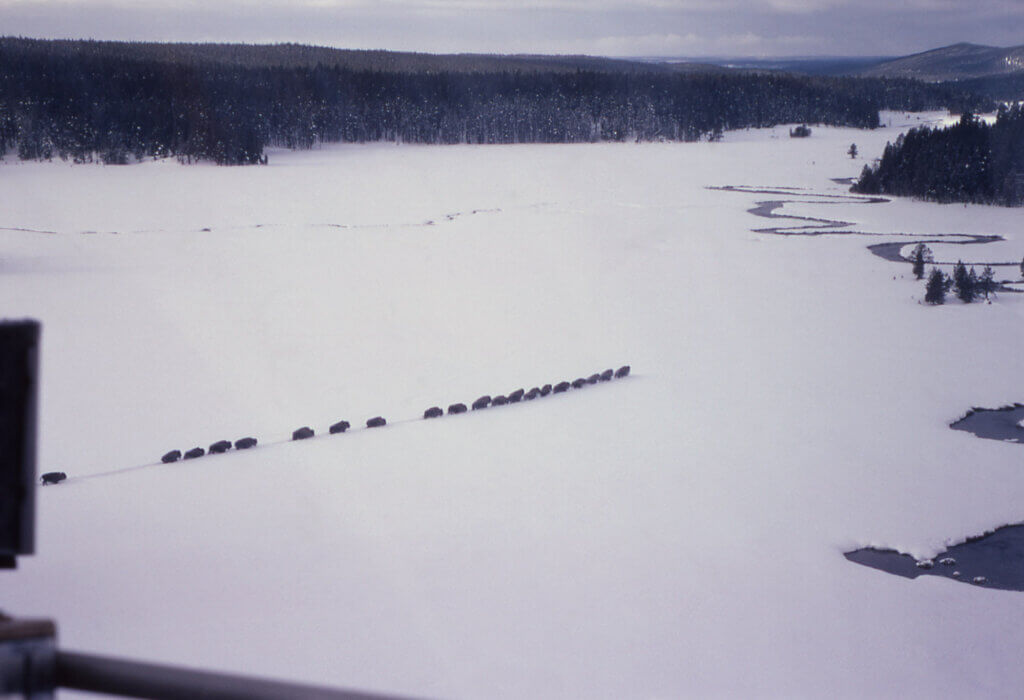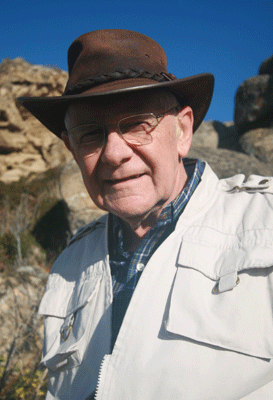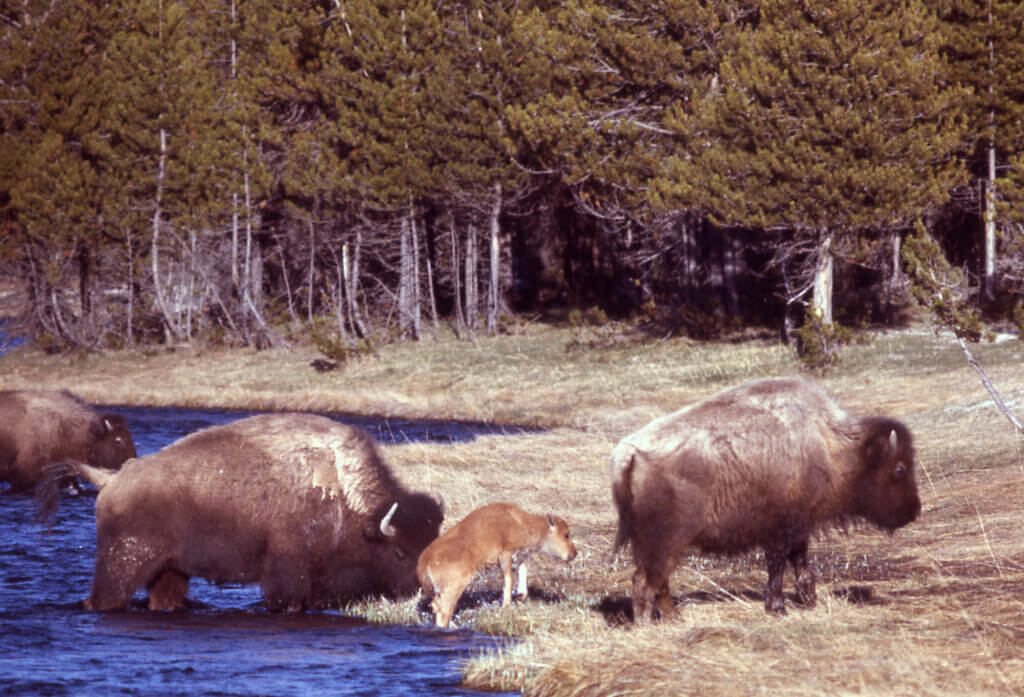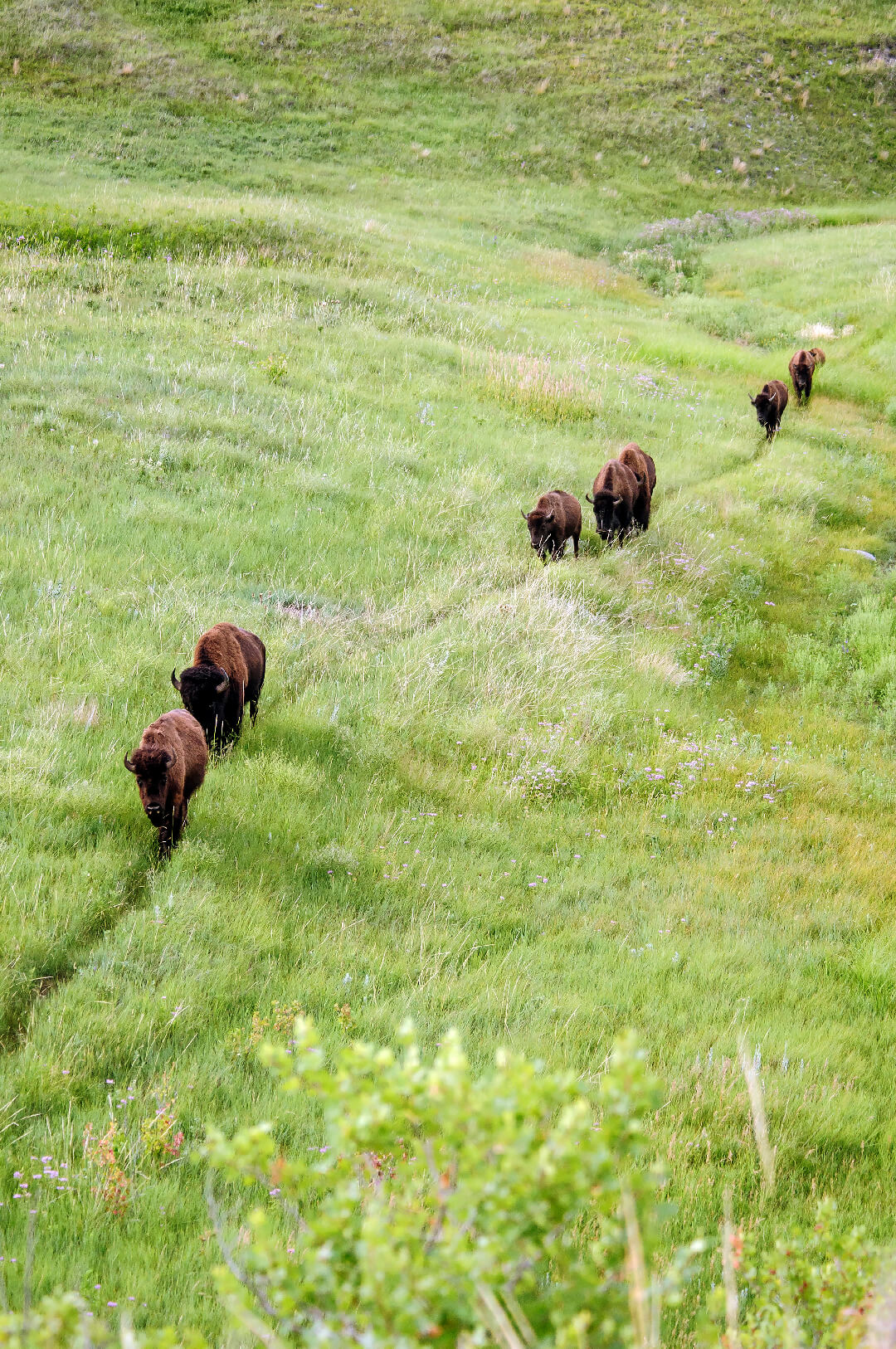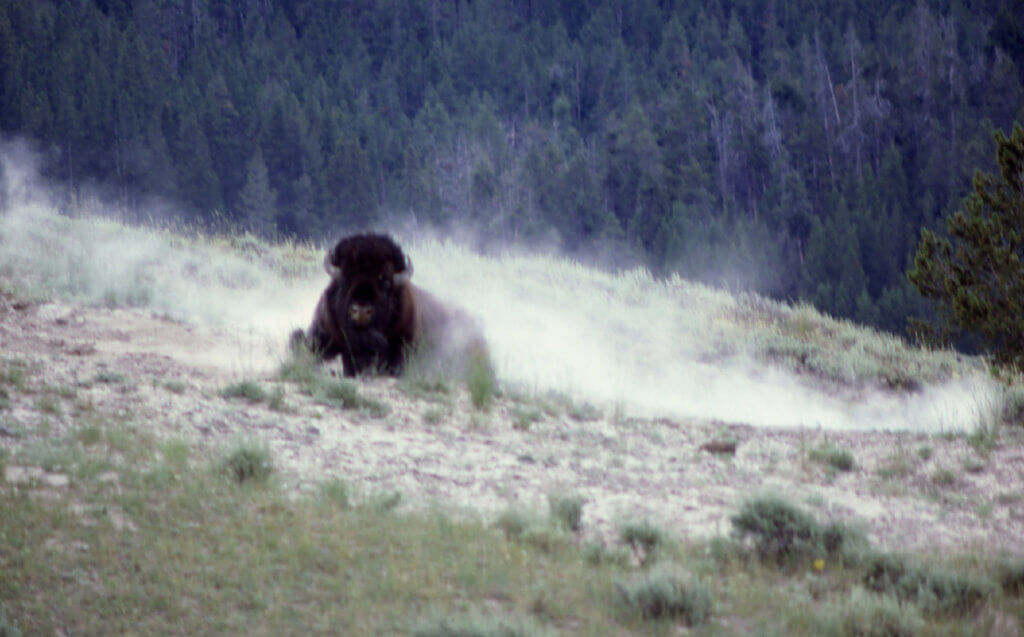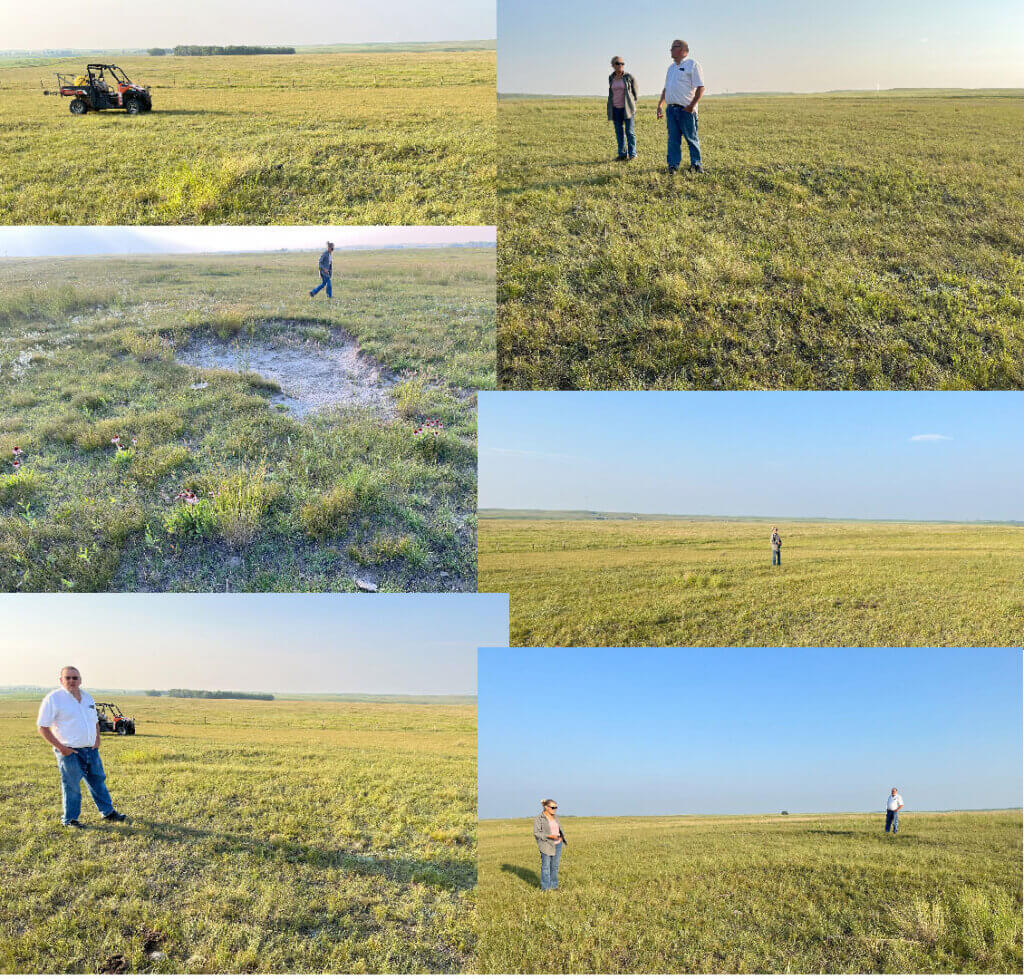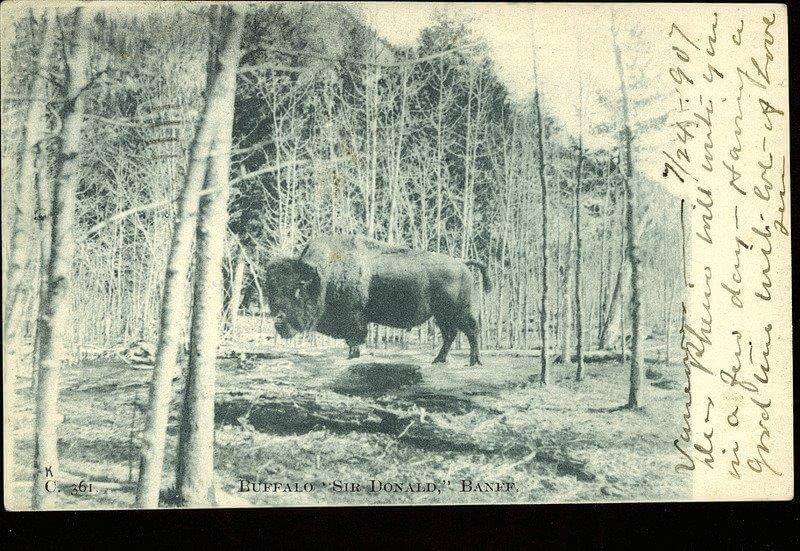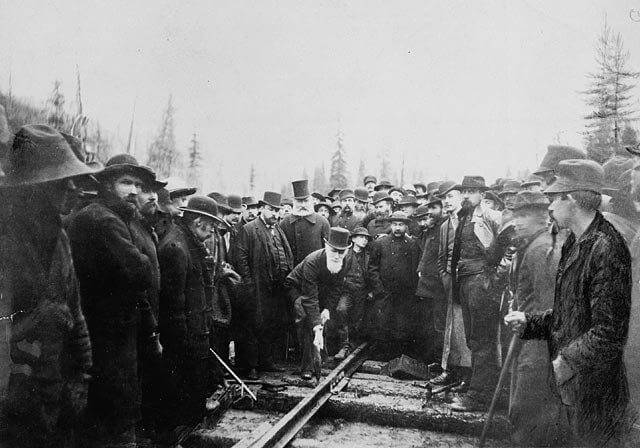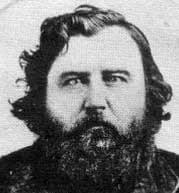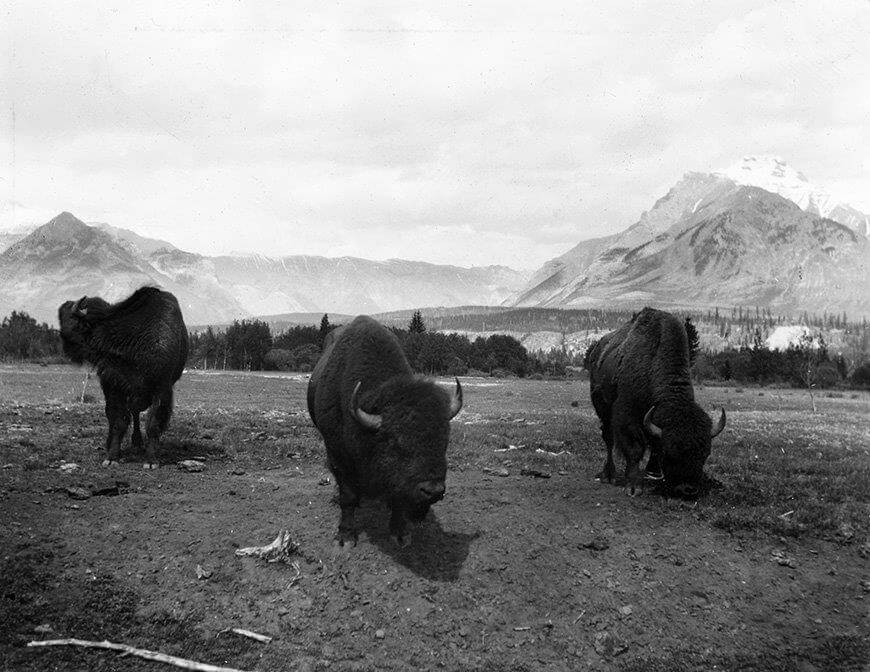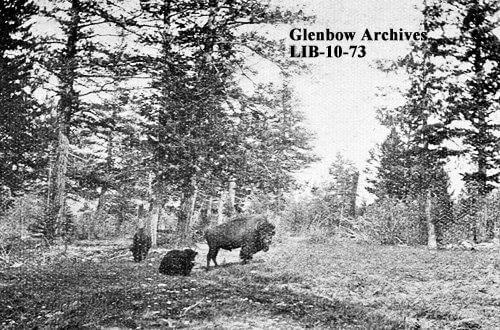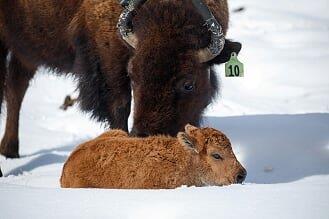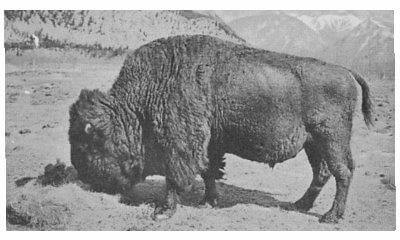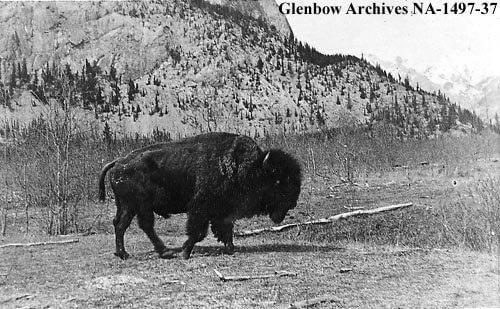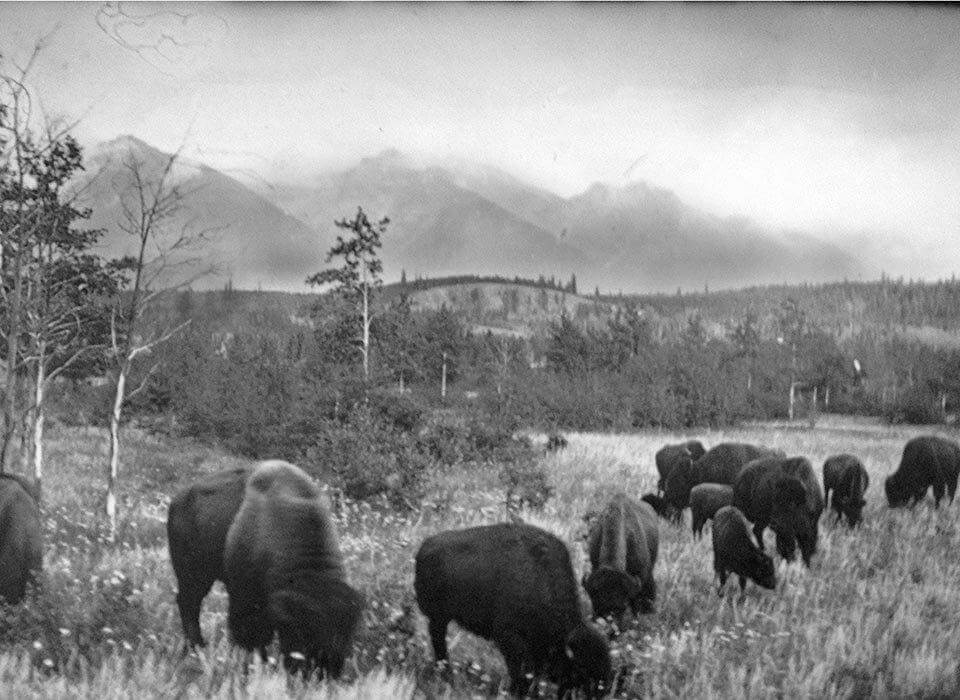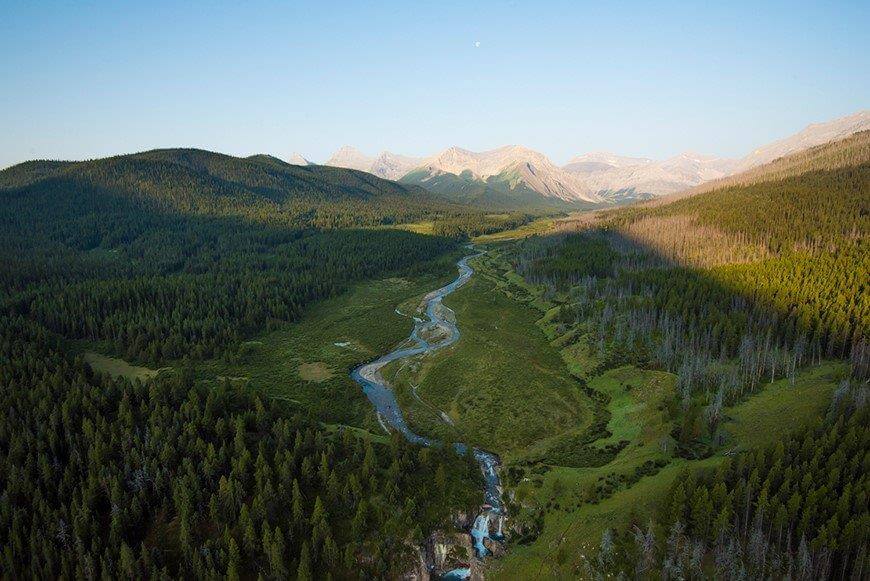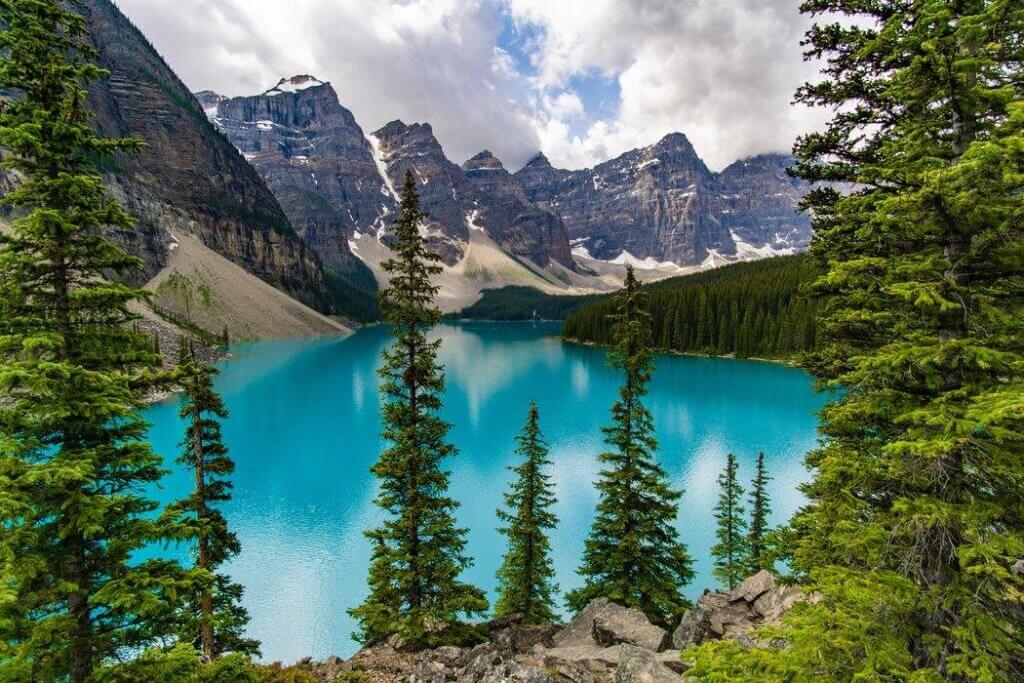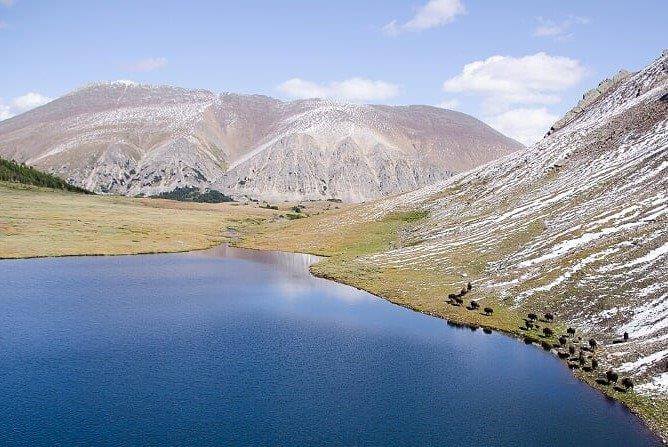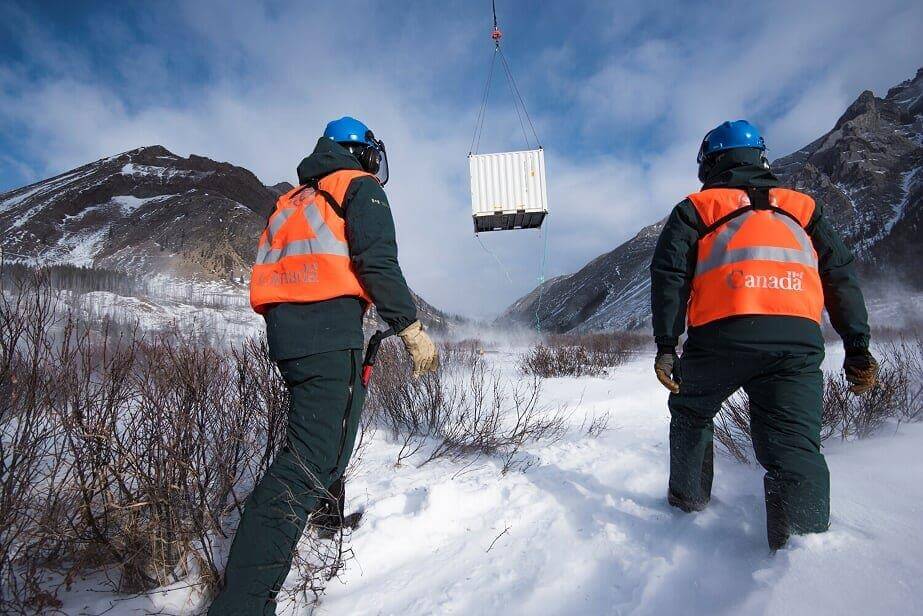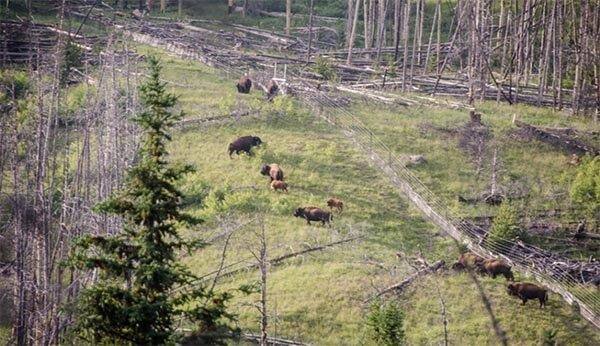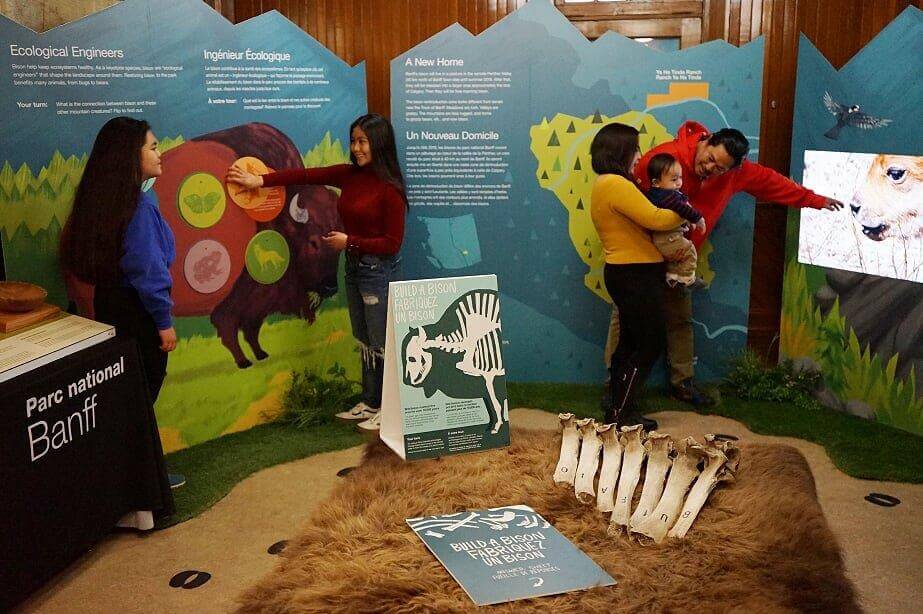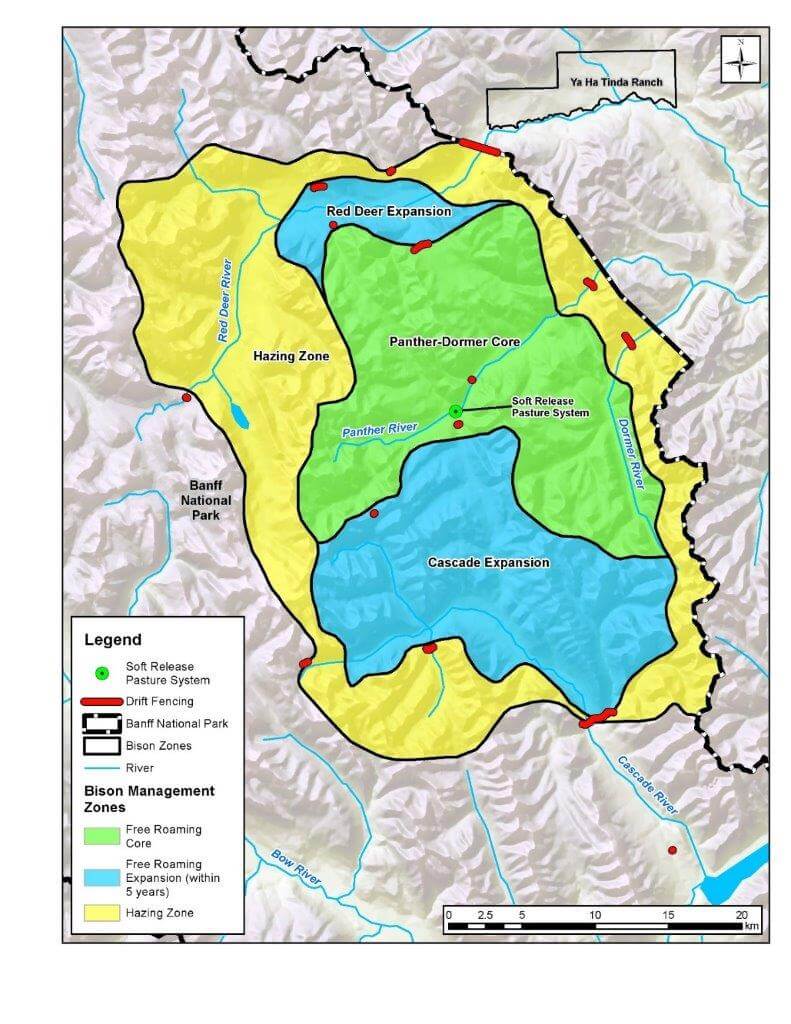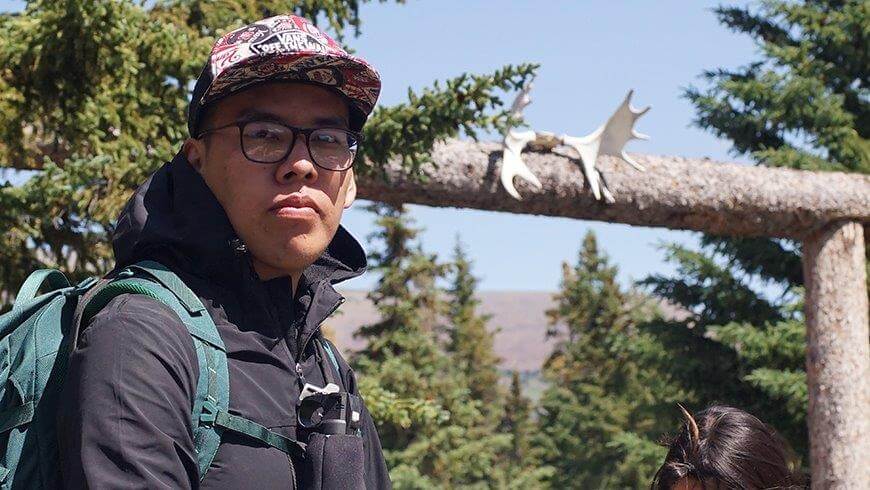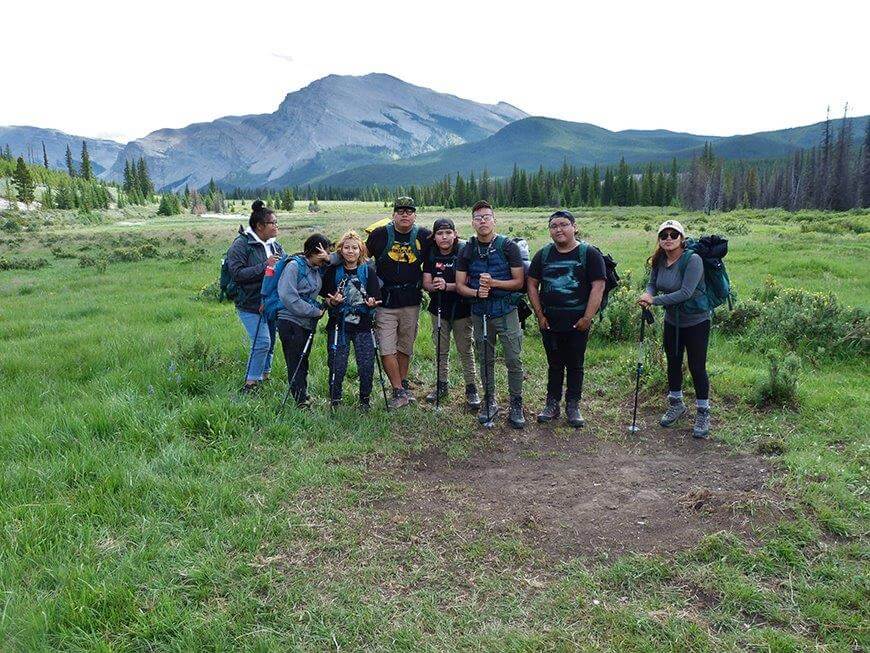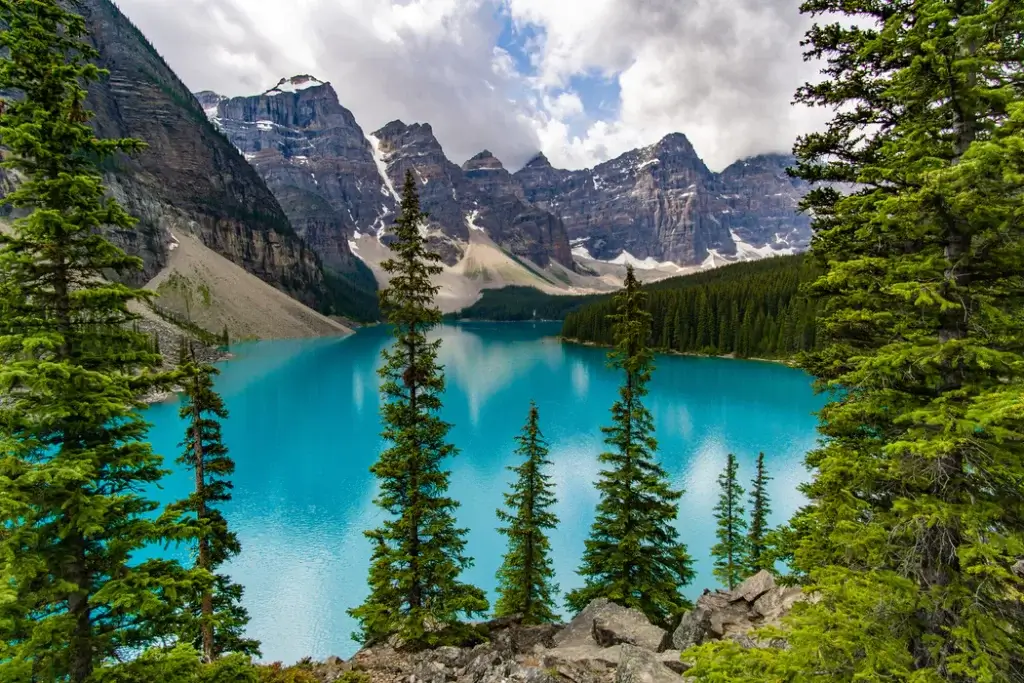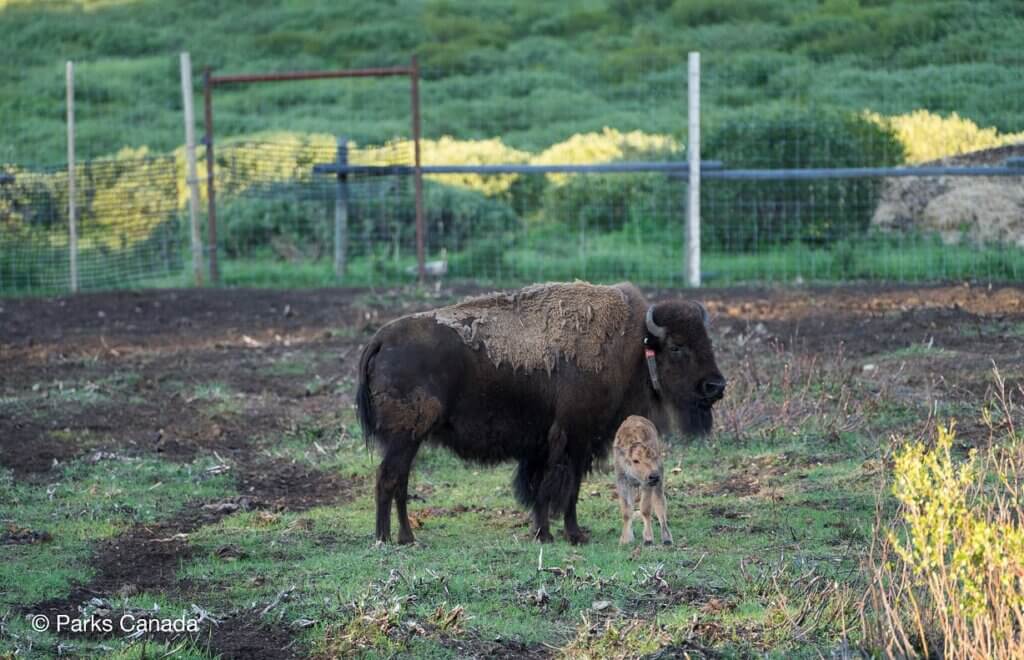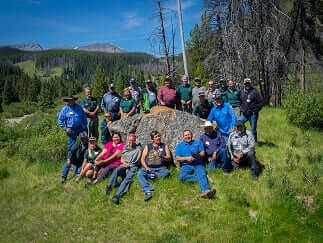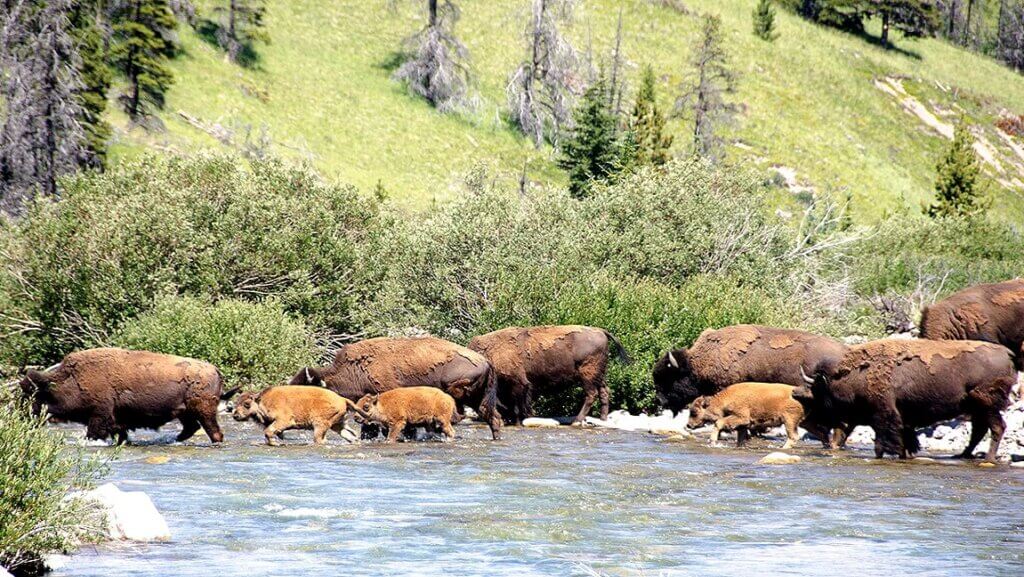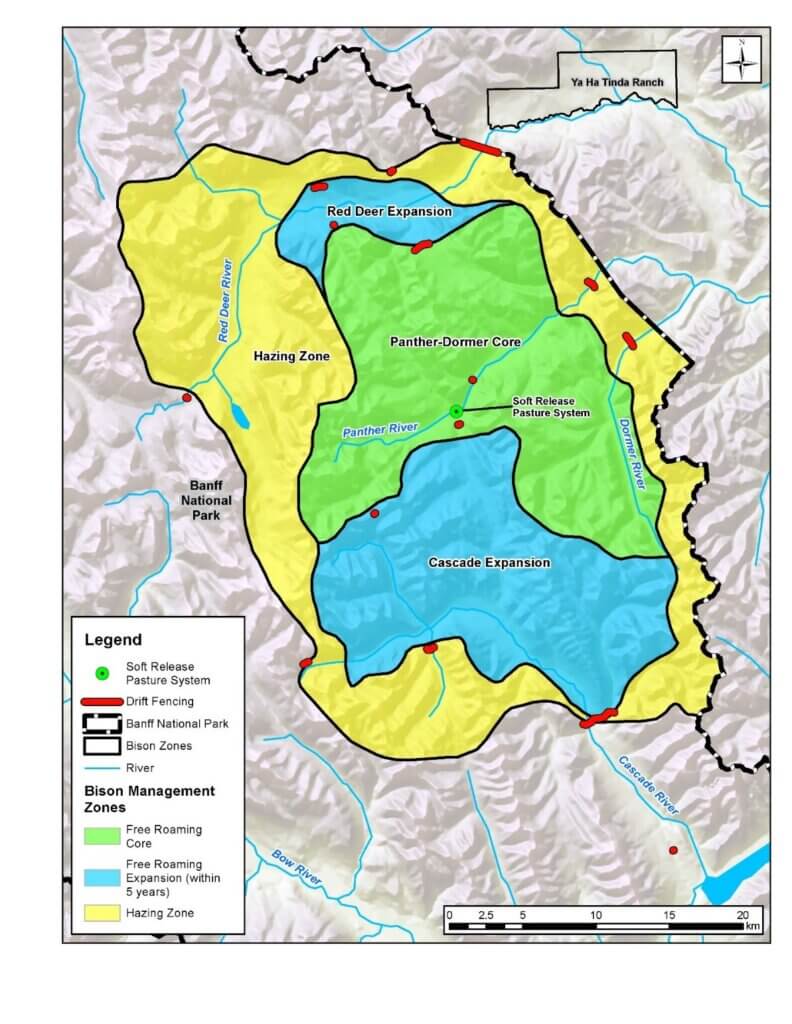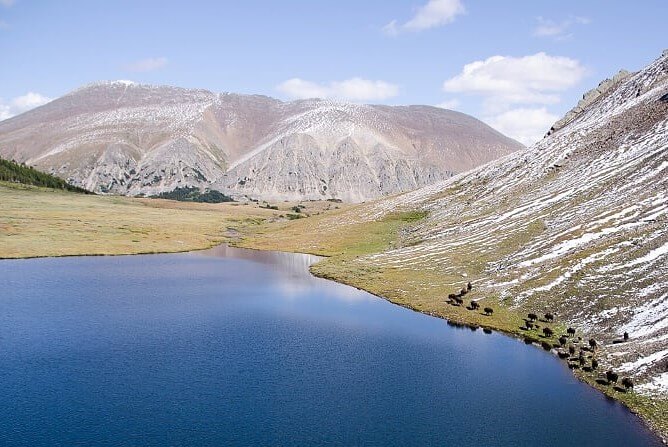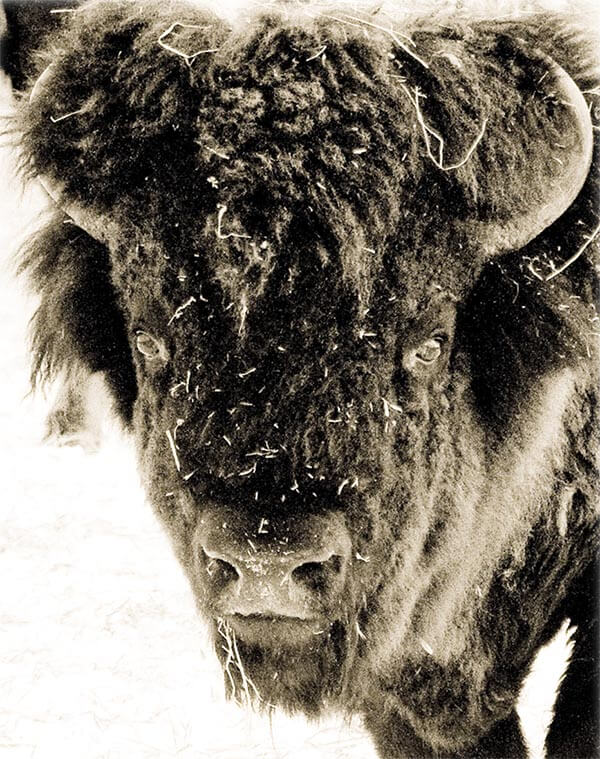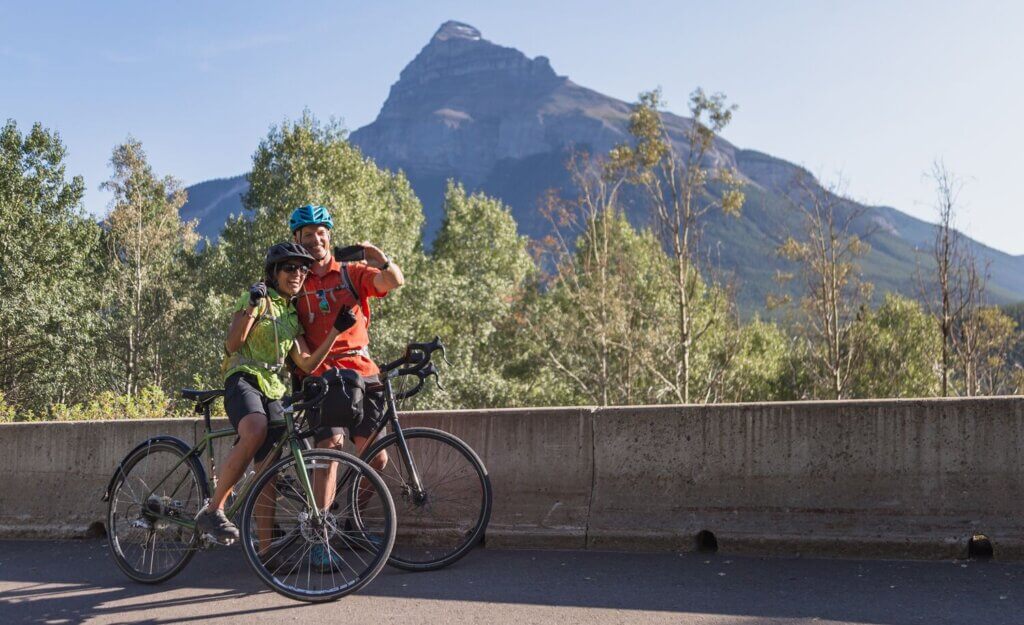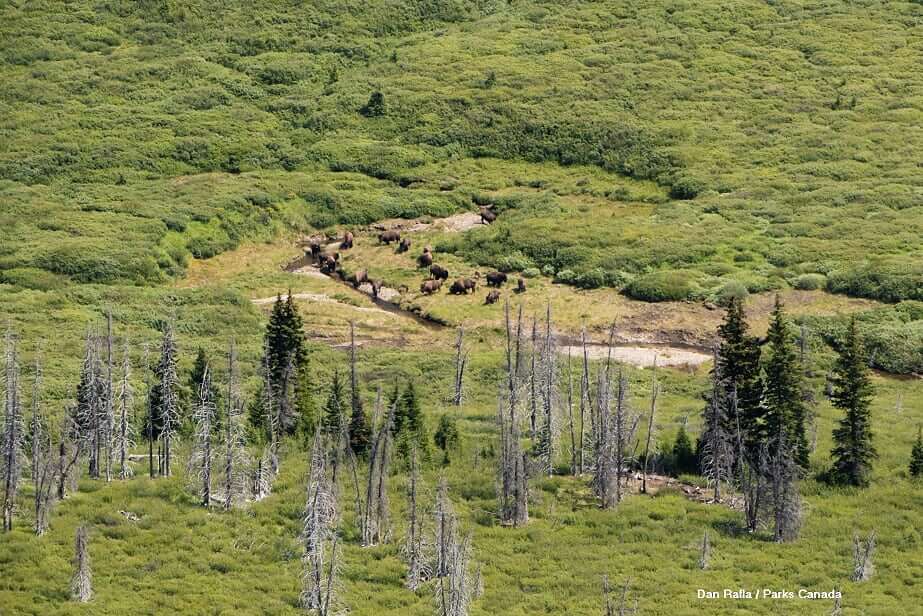
Welcome to the 4-H Bison Project-Level 1
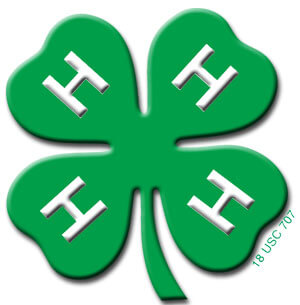
Worldwide the 4-H emblem is a simple 4-leaf clover with 4 leaves that stand for Heart, Head, Hands and Health
We’re excited that you chose to become a member of the Howdy! 4-H Bison project.
We hope you have a great time this year making new friends, taking part in 4-H activities, and learning more about Bison—also known as Buffalo—and their agricultural value!
To complete your Project year in 4-H Bison:
- Complete 4 to 6 of the units of this manual material per club year
- Take part in at least 70% of club activities
- Do a communication project
- Complete a record book
- Take part in your achievement day
- Have a lot of FUN!!!
About the Bison project material
Congratulations! You have made the decision to do the Alberta 4-H Bison project. We hope that you find the information in these manuals to be educational and fun!
Prepare yourself to learn about the colorful past and inspiring future of bison. Today’s bison industry is relatively new despite the long history in North America.
Because this industry is going through rapid evolution, information may change as more research is developed. We encourage you to add to the information provided in these manuals as it comes available to you.
The project material will be covered in three member manuals, this is the first of those manuals.
By placing this material in a three-ring binder, you will be able to create your very own “Bison Handbook.”
In years to come, this book will be a valuable reference, as you witness the progress of this growing industry.
About your record book: You will be using the Alternative Livestock Record Book for this project. You must complete all applicable information in this book by the date specified by the club.
Achievement day requirements
For achievement of this project, you may be required to prepare a display of the information depending on the individual project you have selected. This may be done using pictures, words or even demonstrations.
Provincially, you are strongly encouraged to attend the Wild Rose Show and Sale held in the spring at Camrose. At this show members can meet other youth interested in bison from across the province.
Members will also learn valuable skills and info needed in the industry.
Other Opportunities in 4-H
Your bison project is only a small part of 4-H. There are many fun and exciting activities that are offered at club, district, regional and provincial levels.
These activities will provide you with the opportunity to attend social events, where you can meet other people your age. Clubs are encouraged to invite special guests, plan fun activities, tours and trips.
Your district and regional 4-H councils may sponsor workshops, camps and exchanges as well as fun events.
At the provincial level, members are encouraged to attend camps, shows and development programs. Many scholarships are also available to 4-H members who choose to continue on with their education.
Why does 4-H have a Bison project?
Alberta Agriculture, Food and Rural Development along with the Alberta Bison Association have worked together to bring you this golden opportunity to learn about one of the greatest land animals of North America.
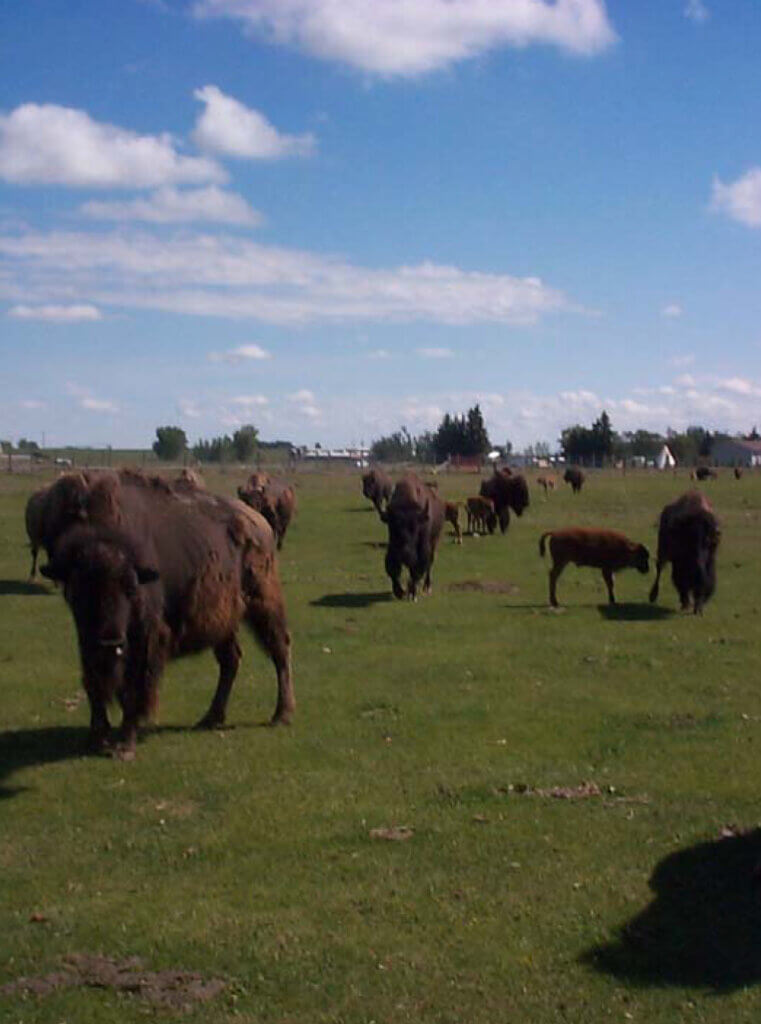
Buffalo Ranch in Alberta with new calves. Photo courtesy Alberta 4-H.
The Bison was a major human economic resource for thousands of years! The recovery of these magnificent animals is not only important from an agricultural perspective, but it is also an important aspect of the history of this great province in which we live.
The Bison project does not follow the traditional 4-H livestock rules! It can’t be rode, It can’t be showed!
The Bison project is a truly unique livestock project that will allow you, as a member, the opportunity to learn about the role that the bison played in our history, and the value they will continue to have in the new millennium!
What is the “Bison Advantage”?
Your challenge, as you work through this project year is to answer this question.
Actually, this is a question that is nearly impossible to answer!!
However, one thing that all people in the Bison industry do completely agree on is the fact that a Bison advantage really does exist.
Are you confused? Let’s try to make sense of this. The Bison advantage is all the benefits people gain from Bison. This affects everyone from producer to consumer, and all those in between.
List a few Bison advantages
There are many advantages, a few that you may have come up with include:
- Healthy food value
- Benefits to the ecosystems
- Inspiration to many artists
- Naturally adapted to our province
- Major part of our history
And the list goes on…
What are the project possibilities? The possibilities are endless! Here are three major categories that your project can fall under.
Exploring Bison
Exploring Bison
This is the ideal project for those members who are interested in the bison industry, but do not have access to a bison herd. Interested members may choose to get involved in a number of self-directed projects that will allow them to learn about the Bison Industry.
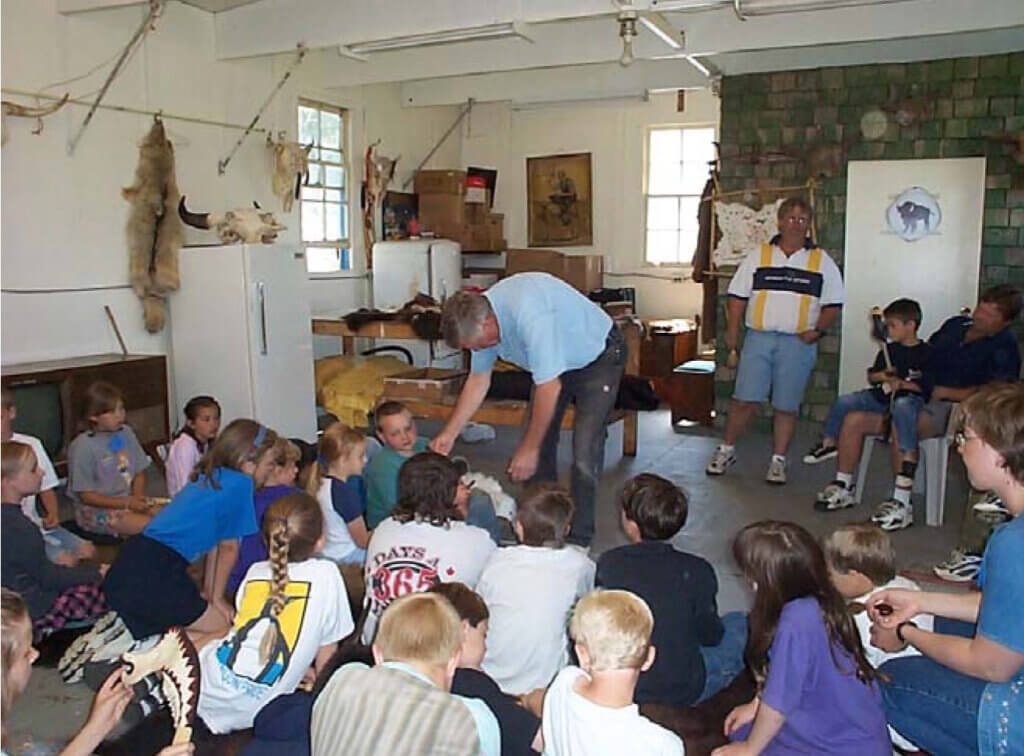
The options include items such as Bison history, folklore and the value of the numerous Bison products and by-products. Achievement day for this project may require a display on one aspect of the industry they have studied, including their project book.
Bison Herd Observations
Members, who have access to a Bison herd, may choose to do a Bison observation project. With this project, members will monitor a specific herd and record their observations in a record book.
Within the herd project, 4-H members may choose to select one project animal that they will observe and record its behaviour.
They will then monitor the social order of the entire herd, and determine the role of the selected animal within the herd.
Other possibilities under the Bison Herd project may include the effects of the herd on the environment, methods of marketing a Bison operation, developing a management system or raising a novice bison project.
Senior members may even choose to develop a research project that will provide valuable information to Bison producers.
Carcass Bison
Members may choose a weanling bull, or market heifer, for their project animal. This animal will be fed until it is ready for market.
At that time it will be sent for slaughter and the carcass information will be obtained.
The member is responsible for choosing the time to sell their animal, so that it obtains the optimum carcass grade.
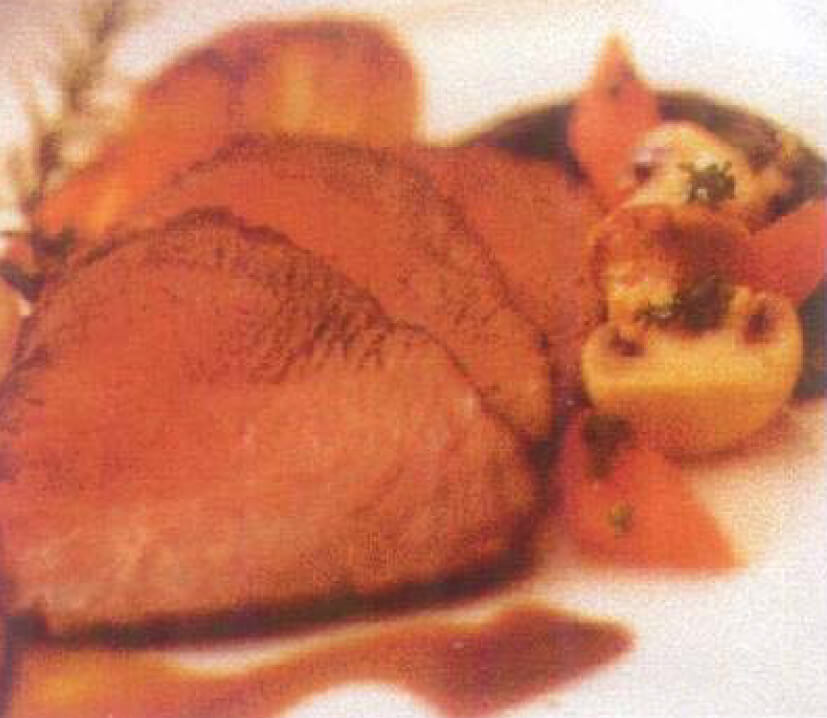
A 4-Her with the Carcass project may choose to market the meat—or develop recipes for cooking it.
The carcass project may also include marketing the meat, or even developing recipes for a variety of meat processing methods such as burgers and jerky.
Achievement of this project may be a wide range of things from preparing a meal to a display of photos, carcass data and marketing strategies.
The best part of any 4-H project is that you will “learn to do by doing.”
There are a variety of fun activities to help you learn.
Alberta 4-H Bison – Level 2
Welcome to the 4-H Bison Project
We hope you were challenged with the first manual and you are excited to learn more about Bison in this second level manual. Once again, this project year will be a great opportunity for you to make new friends, take part in 4-H activities, and learning more about Bison and their native value!
Howdy!
To complete your project year in 4-H Bison, you must:
- Complete four to six of the units per club year of the manual material
- Take part in at least 70% of club activities
- Do a communication project
- Complete a record book
- Take part in your achievement day
- Have a lot of FUN!
About the Bison Project material
Congratulations! You have completed the first manual and you are about to begin the next level. We hope that you find the information in these manuals to be both educational and fun!
Prepare yourself to learn about the colourful past and inspiring future of today’s Bison.
Today’s Bison industry is relatively new despite their long history in North America. It is important to remember that this industry is going through rapid evolution, and information may change as more research is developed.
You are encouraged to add on to the information provided in these manuals as it comes available to you. The project material is covered in three member manuals, this is the second of the manuals. By placing this material in a three-ring binder, you will be able to create your very own “Bison Handbook”.
In years to come, this book will become a valuable keepsake, as you witness the progress of this growing industry.
About your Record Book
Depending on the project you wish to do, you will have a choice in what record book you can complete.
If you decide that you would like to do a project involving the Exploring Bison you may wish to use a craft, sewing or generic record book available at the 4-H office, or create your own record book that explains your project from the beginning of the 4-H year through to your achievement.
If you wish to create a record book of your own you would need to include the components that are listed at the back of this chapter.
If you choose to do the Bison Herd Observations project, you can use the Alternative Livestock Record Book to complete this project.
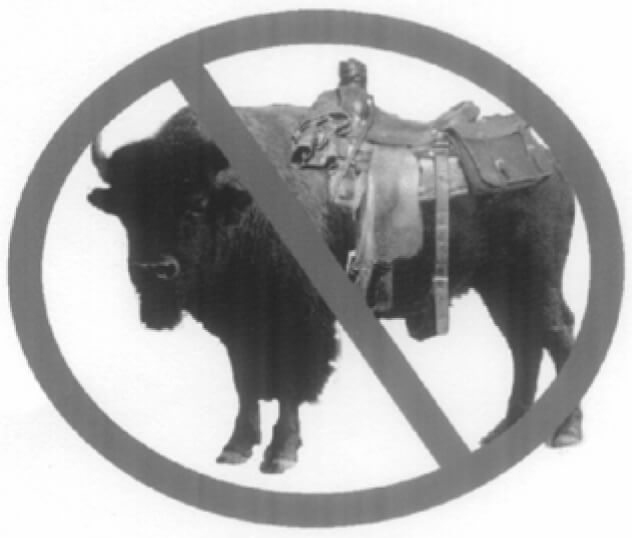
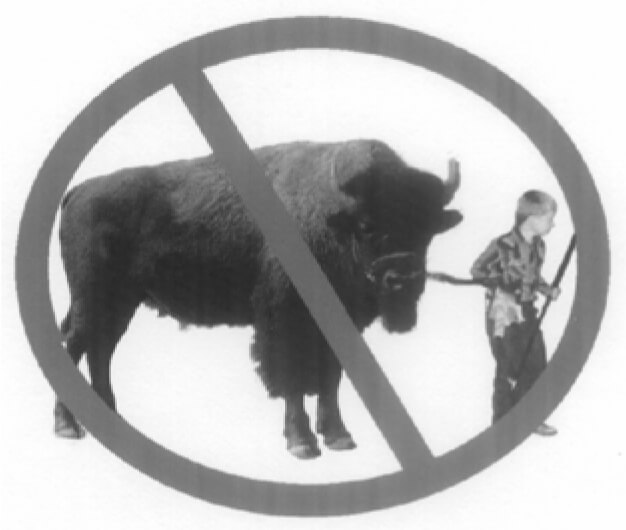
In general the 4-Her will not be handling the Bison close up.
All applicable information would need to be completed in this book by the date specified by the club.
The Carcass Bison project is another project that you may wish to create your own record book for, or you could use the generic record book depending on the nature of your specific project.
Once again, if you choose to create your own record book for this project, please refer to the last page of this chapter for a guideline of required topics.
Achievement Day Requirements
For achievement of this project, you may be required to prepare a display of your information depending on your individual project you have selected to do.
This may be done using pictures, words or even demonstrations. Provincially, you are strongly encouraged to attend the Wild Rose Show and Sale held in Camrose.
This show will provide all members with the opportunity to meet other youth from across the province, and will teach you valuable skills needed in the Bison industry.
For more information you can contact the Bison Centre of Excellence web page at www.bisoncentre.com or phone toll free using the rite line at 310-0000 then coding in 780-986-4100.
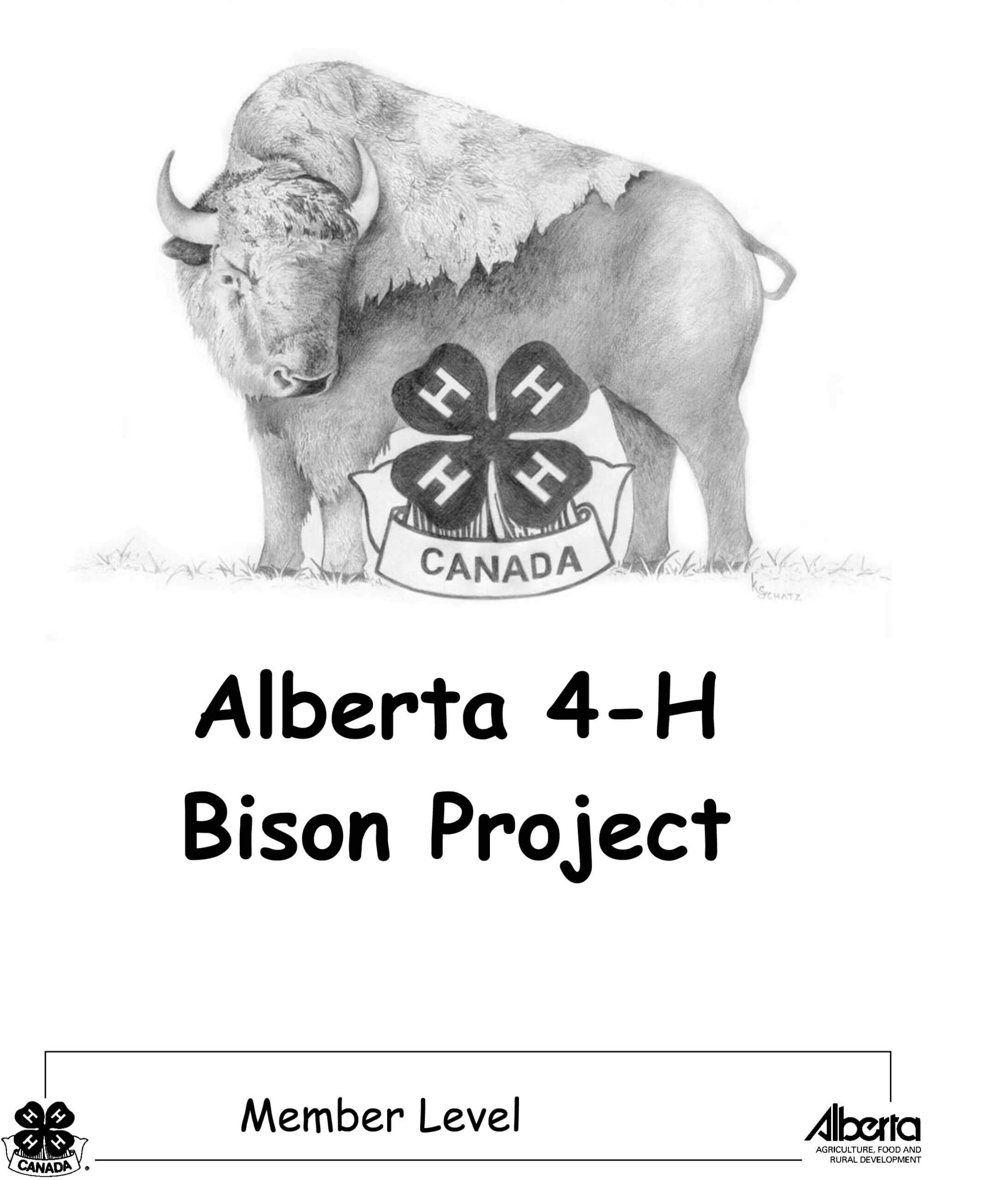
Member Level 3
The 4-H Motto
“Learn to Do By Doing.”
The 4-H Pledge
I pledge:
My Head to clearer thinking,
My Heart to greater loyalty,
My Hands to larger service,
My Health to better living,
For my club, my community and my country.
The 4-H Grace
We thank thee, Lord, for blessings great on this, our own fair land. Teach us to serve thee joyfully, with head, heart, health and hand.
Table of Contents – Level 3
Revised May 2003/css
|
Welcome |
5 |
|
Nutrient Requirements of the Bison |
13 |
|
Digestion of the Bison |
23 |
|
Feeds for Bison |
33 |
|
Parasites of the Bison |
39 |
|
Bison Herd Health |
47 |
|
Breeding and Reproduction |
53 |
|
The Newborn Calf |
59 |
|
Bison Handling |
63 |
|
Range and Pasture Management |
75 |
|
Business Management |
79 |
|
Marketing Bison |
85 |
|
Today’s Bison Industry |
89 |
|
Alberta 4-H Law |
93 |
|
Quotes |
103 |
|
Bibliography |
105 |
|
Evaluation |
108 |
Welcome to the 4-H Bison Project
Welcome back! We’re excited that you chose to return as a member of the 4-H Bison project. We hope you have a great time this year making new friends, taking part in 4-H activities, and learning more about bison and their native value!
To complete your project year in 4-H Bison
- Complete four to six of the units per club year of the manual material
- Take part in at least 70% of club activities
- Do a communication project
- Complete a record book
- Take part in your achievement day
- Have a lot of FUN!
About the Bison project material
Congratulations! By now you have learned a great deal about Bison and their value. We hope that you have been able to keep all of your past manual information and updates all together in one place.
Now you will have the opportunity and challenge of working through the information in this manual. As you know, this industry continues to evolve, and as a result new information is constantly coming in.
This is your third and final member manual. You are well on your way to having your very own personalized “Bison Handbook”. In the years to come, this book will become a valuable keepsake, as you continue to witness the progress of this growing industry.
Because you have completed the other manuals, and you have a good understanding of the basics, your role as a senior member is going to change this project year.
The activities covered in this manual will become more involved and will require greater effort than the past manual activities.
About your Record book
Depending on the project you wish to do, you will have a choice in what record book you can complete.
If you decide that you would like to do a project involving the Exploring Bison you may wish to use a craft, generic record book available at the provincial 4-H office, or create your own record book that explains your project from the beginning of the 4-H year through to your achievement.
If you wish to create a record book of your own you need to include the components that are listed at the back of this chapter.
If you choose to do the Bison Herd Observations project, you can use the Alternative Livestock Record book to complete this project. All applicable information would need to be completed in this book by the date specified by the club.
The Carcass Bison project is another project that you may wish to create your own record book for, or you could use the generic record book depending on the nature of your specific project. Once again, if you choose to create your own record book for this project, please refer to be last page of this chapter for a guideline of required topics.
Achievement day requirements
 For achievement of this project, you may be required to prepare a display of your information depending on the individual project you have selected to do. This may be done using pictures, words or even demonstrations. Provincially, you are strongly encouraged to attend the Wild Rose Show and Sale held in Camrose. This show will provide all members the opportunity to meet other youth from across the province, and will teach you valuable skills needed in the industry.
For achievement of this project, you may be required to prepare a display of your information depending on the individual project you have selected to do. This may be done using pictures, words or even demonstrations. Provincially, you are strongly encouraged to attend the Wild Rose Show and Sale held in Camrose. This show will provide all members the opportunity to meet other youth from across the province, and will teach you valuable skills needed in the industry.
For more information you can contact the Bison Centre of Excellence web page at www.bisoncentre.com or phone toll free using the rite line at 310-0000 then coding in 780-986-4100.
Other Opportunities in 4-H
Your Bison project is only a small part of 4-H. There are many fun and exciting activities that are offered at club, district, regional and provincial levels.
These activities will provide you with the opportunity to attend social events, where you can meet other people your age. Clubs are encouraged to invite special guests, plan fun activities, tours and trips.
Your district and regional 4-H councils may sponsor workshops, camps and exchanges as well as fun events. At the provincial level, members are encouraged to attend camps, shows and development programs.
Many scholarships are also available to 4-H members continuing on with their education. You deserve to get the very most you can out of the entire 4-H program!!
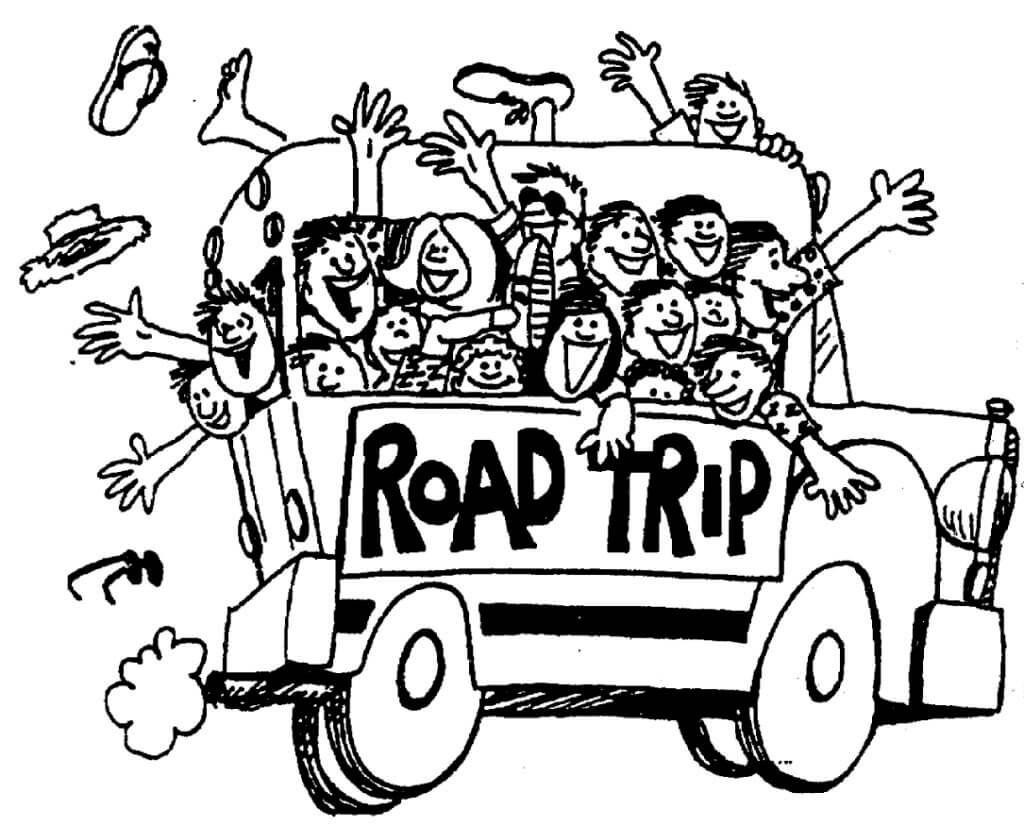
The Ultimate Challenge!
Explain what you believe to be the most important points of the Bison advantage and why? Remember, everyone has their own beliefs about what the Bison advantage is.
Based on everything that you have learned up to now, why do you think that the preservation of the Bison as an agricultural industry is important.
Your challenge is to prepare a short 5 – 10 minute activity, presentation or story about the “Bison advantage.” You will be responsible for presenting this activity at your club meeting to introduce others to the Bison advantage. Have fun with it and the others will too!

Write a summary of your 4-H year and project just to summarize everything that you did. You can include photos and news articles, etc. (If you do use news articles remember to reference and date them.)
Alberta 4-H Bison Project – Leader
Welcome to the 4-H Bison Project
We’re excited that you chose to become a leader of the 4-H Bison project.
LEADERS MANUAL- Nutrition for 3 levels
Nutrient Requirements
Roll Call:
Name a nutrient. ____________________________
Name a feed item that is a good source of this nutrient.
This roll call will provide a good introduction to this topic. Some of the answers you should hear are:
Nutrient Good source of this nutrient
Water clean, fresh drinking water, available to the animals at all times
Protein soybean meal, canola meal, corn gluten meal, fish meal, meat and bone meal
Energy grains, forages
Vitamins forages, grains, sunshine, manufactured in the rumen, vitamin supplements
Minerals forages, grains, mineral supplements
Objectives
Level 1
- To introduce the members to the concept of essential nutrients.
- To create an appreciation of the importance of these nutrients.
Level 2
- To understand that different animals require different amounts of nutrients.
- To learn more about the different vitamins and minerals and their importance.
Level 3
- To learn some of the effects of deficiencies of vitamins and minerals.
- To understand about energy and how the body uses it.
We have provided the level 3 members with some interesting information about vitamin and mineral deficiencies and energy. As activities to accompany these topics, we ask that they share the concepts with the club members.
Use these level 3 members!
AND THERE’S MORE!
WHAT A GREAT START for many STATES IN THE US and more PROVINCES IN CANADA to Follow up!
JUST IMAGINE WHAT ELSE you could do with a BUFFALO 4-H PROJECT!!!
Published by: 4-H Branch
Alberta Agriculture, Food and Rural Development
Room 200, 7000-113 Street, Edmonton, Alberta, Canada T6H 5T6
Check out our web site at http://www.4h.ab.ca
4-H Branch of Alberta Agriculture, Food and Rural Development.
Drafted by Leila Milne, 2002.
NEXT: THE BUFFALO TREATY
______________________________________________________________

Francie M Berg
Author of the Buffalo Tales &Trails blog
